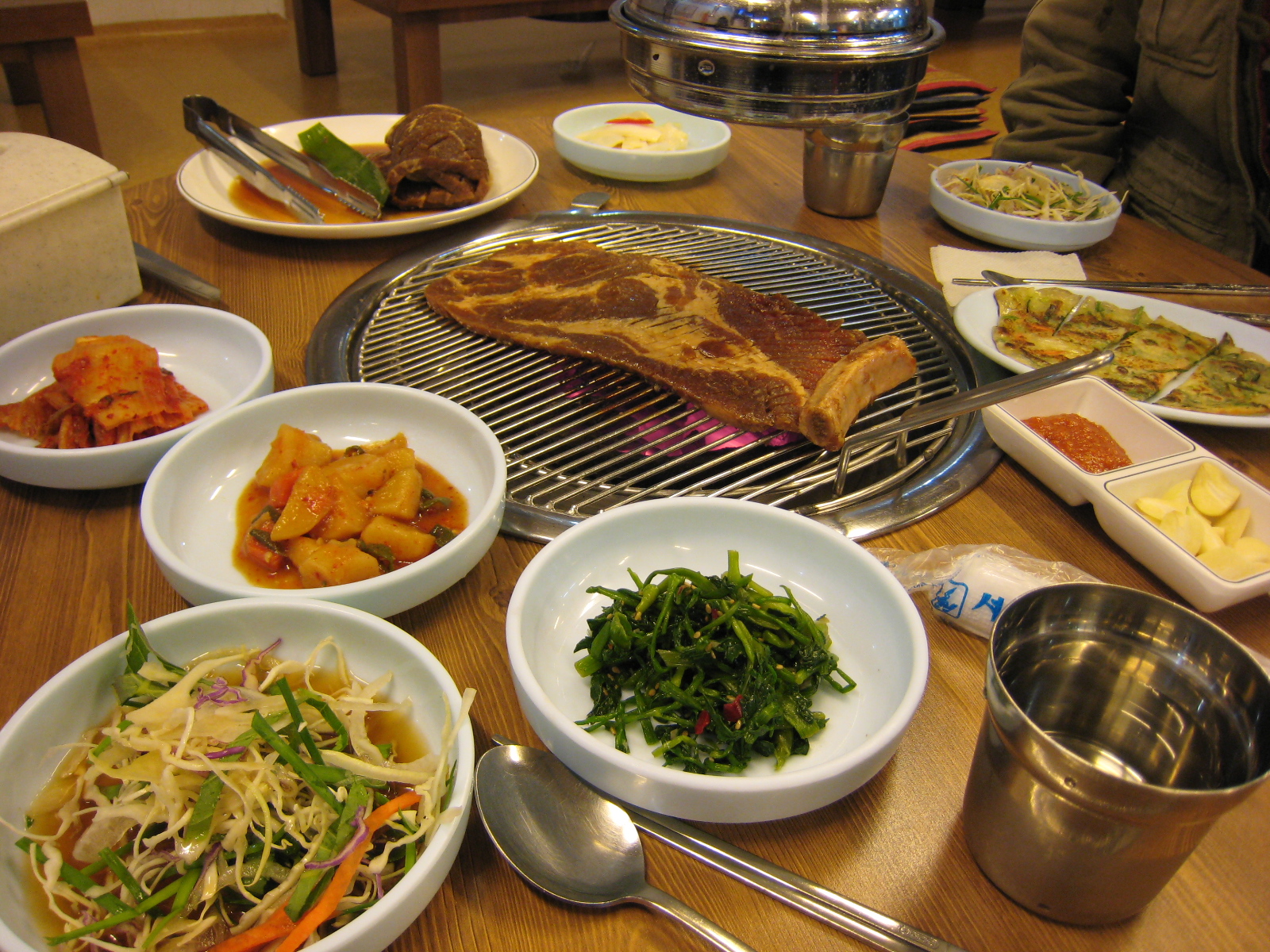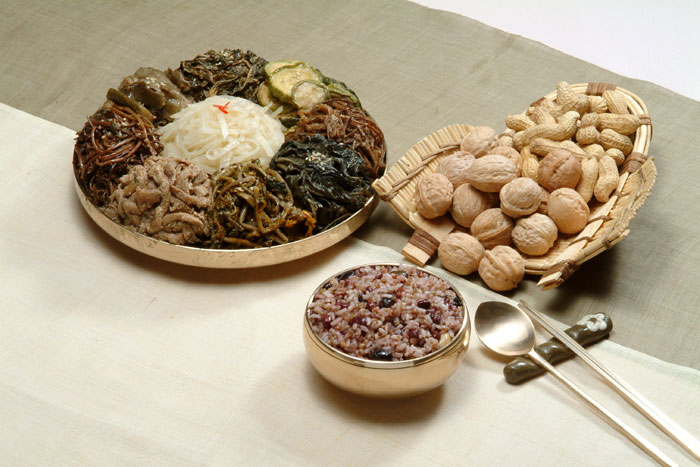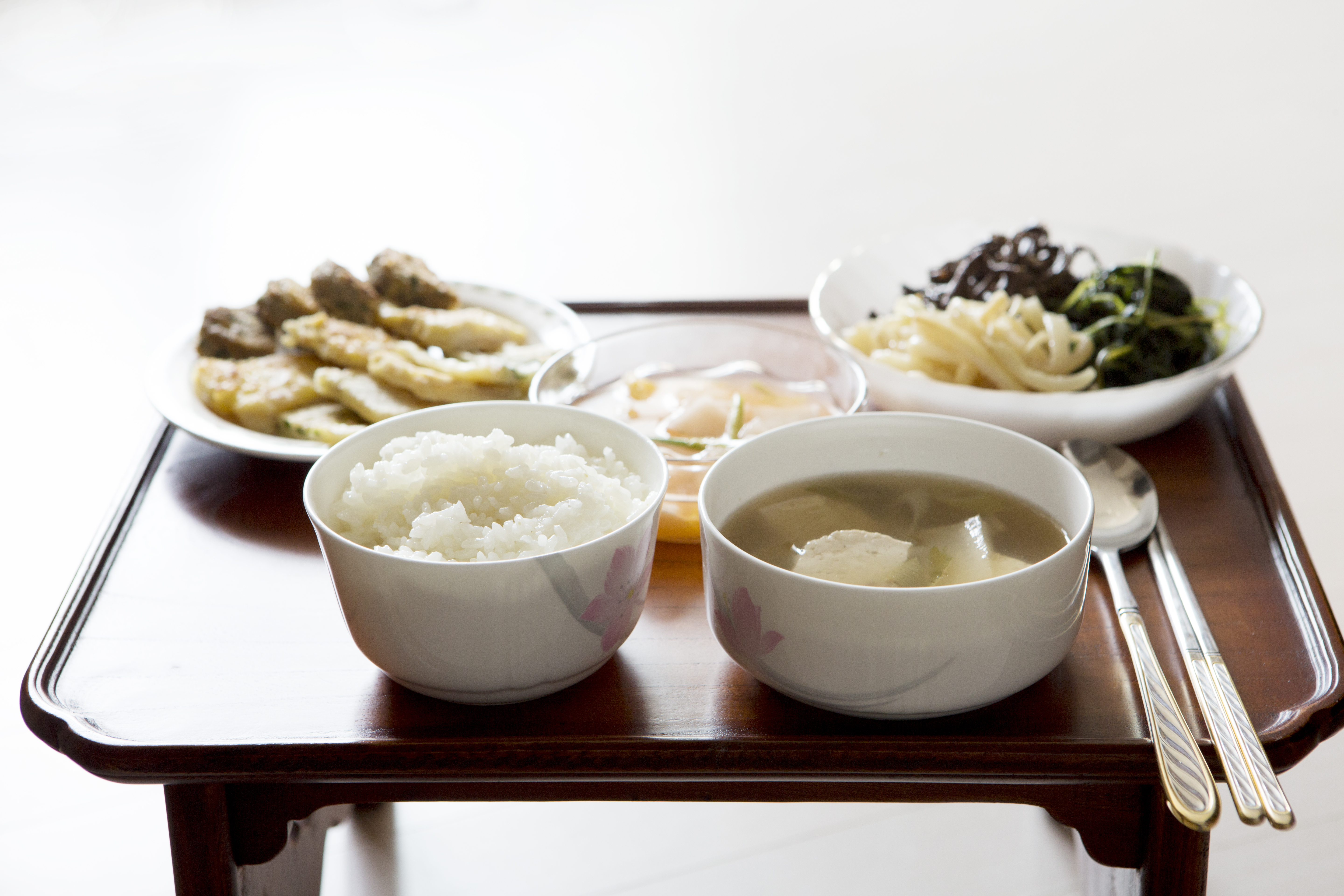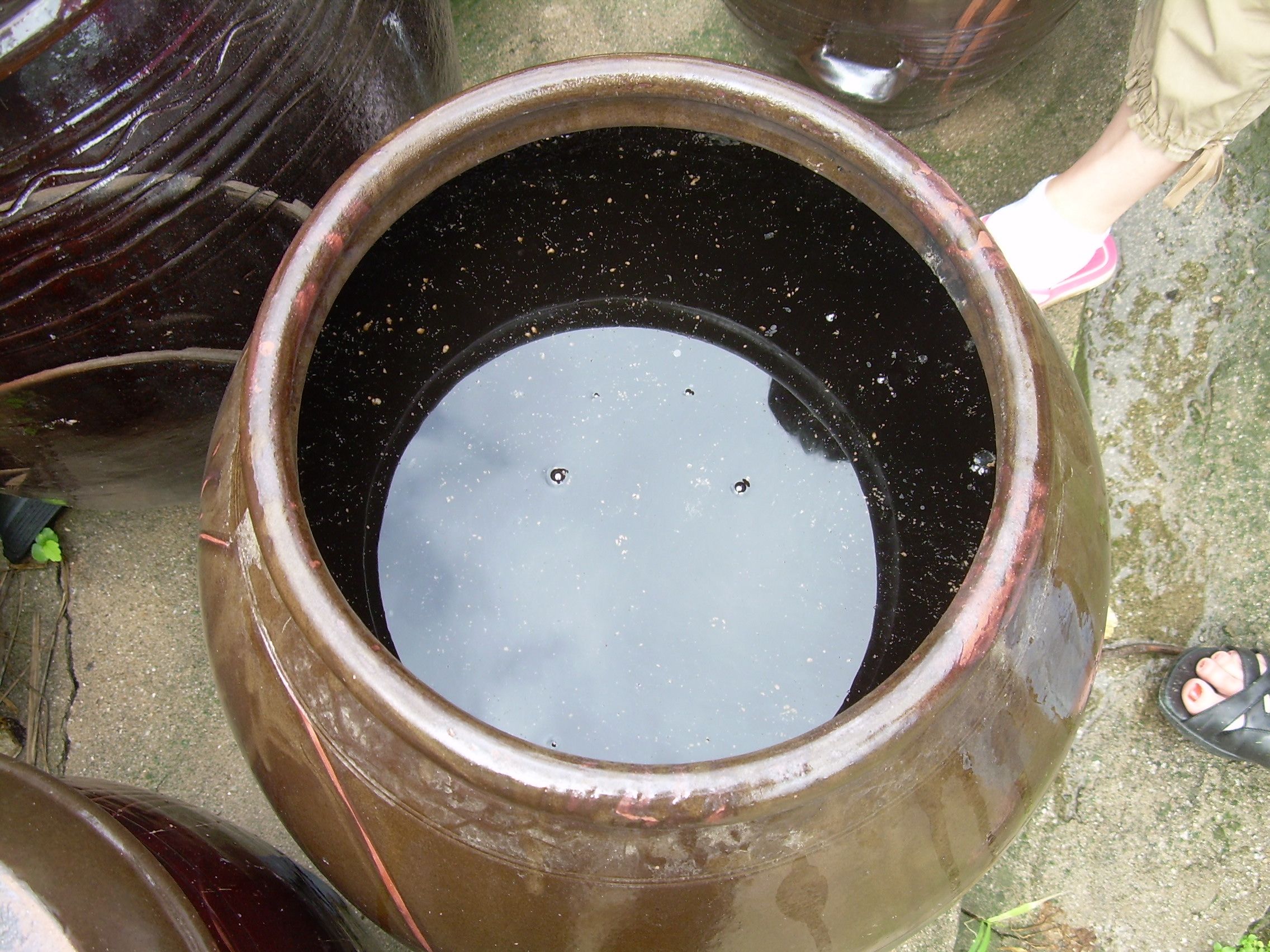|
Siraegi
''Siraegi'' () is a Korean ingredient prepared by drying the leaves and stems of a radish or, less commonly, of a napa cabbage. ''Siraegi'' refers to radish stems and leaves or the outer leaves of cabbage dried in the sun and wind. ''Siraegi'' dishes * ''Siraegi-jijimi'' – a type of ''jijimi'' that is made by first cutting soaked ''siraegi'' into bite-size pieces, then seasoning it with ''doenjang'' (soybean paste), perilla oil, Cheongyang chili, and minced garlic, and finally stewing it in a broth made from dried Alaska pollock (''myeongtae'') head, kelp, and anchovy in ''tteumul'' water (the water left from washing rice). * ''Siraegi-doenjang-jigae'' – a type of ''doenjang-jjigae'' (soybean paste stew) made by cutting soaked ''siraegi'' into bite-size pieces, massaging it with the mixture of ''doenjang'' (soybean paste), chili powder and minced garlic, and boiling it with scallions, red chili, shiitake mushrooms, and cubed tofu in anchovy broth. * ''Siraegi-namul'' – a ... [...More Info...] [...Related Items...] OR: [Wikipedia] [Google] [Baidu] |
Ugeoji
In Korean cuisine, ''ugeoji'' () is outer leaves or stems of cabbage, radish, and other greens, which are removed while trimming the vegetables. ''Ugeoji'' is often used in soups and stew A stew is a combination of solid food ingredients that have been Cooking, cooked in Soup, liquid and served in the resultant gravy. Ingredients can include any combination of vegetables and may include meat, especially tougher meats suitable for ...s, including '' haejang-guk'' (hangover soup). Gallery File:Ugeoji 1.jpg, Seasoned boiled ''ugeoji'' File:Ugeojiguk (outer leaves soup).jpg, ''Ugeoji- guk'' (''ugeoji'' soup) File:Ugeoji-ureong-doenjang-guk.jpg, ''Ugeoji- ureong- doenjang-guk'' (soybean paste soup with ''ugeoji'' and river snails) See also * '' Siraegi'' – dried radish greens References Food ingredients Korean cuisine {{vegetable-stub ... [...More Info...] [...Related Items...] OR: [Wikipedia] [Google] [Baidu] |
Korea
Korea is a peninsular region in East Asia consisting of the Korean Peninsula, Jeju Island, and smaller islands. Since the end of World War II in 1945, it has been politically Division of Korea, divided at or near the 38th parallel north, 38th parallel between North Korea (Democratic People's Republic of Korea; DPRK) and South Korea (Republic of Korea; ROK). Both countries proclaimed independence in 1948, and the two countries fought the Korean War from 1950 to 1953. The region is bordered by China to the north and Russia to the northeast, across the Yalu River, Amnok (Yalu) and Tumen River, Duman (Tumen) rivers, and is separated from Japan to the southeast by the Korea Strait. Known human habitation of the Korean peninsula dates to 40,000 BC. The kingdom of Gojoseon, which according to tradition was founded in 2333 BC, fell to the Han dynasty in 108 BC. It was followed by the Three Kingdoms of Korea, Three Kingdoms period, in which Korea was divided into Goguryeo, Baekje, a ... [...More Info...] [...Related Items...] OR: [Wikipedia] [Google] [Baidu] |
Doenjang-jjigae
Doenjang-jjigae (), referred to in English as soybean paste stew, is a Korean traditional ''jjigae'' (stew-type dish), made from the primary ingredient of ''doenjang'' (soybean paste), and additional optional ingredients of vegetables, seafood, and meat. It is one of the most iconic and popular traditional dishes in Korean cuisine, and is often eaten regularly regardless of occasion or time of day. ''Doenjang-jjigae'' was initially made with home-made ''doenjang''; however, due to extensive industrialisation of soybean paste, households and restaurants nowadays use factory-made ''doenjang'' instead as their ingredient. From traditional to modern Korean cuisine, ''doenjang'' has become one of the most frequently used ''jang'' (sauce/paste). It is claimed as a national dish. ''Doenjang-jjigae'' is often mistaken for '' doenjang-guk'' (soybean paste soup). The main difference between Korean-style stew and soup is in the method of cooking and serving. ''Jjigae'' is thicker, has mor ... [...More Info...] [...Related Items...] OR: [Wikipedia] [Google] [Baidu] |
Bap (food)
''Bap'' () is a Korean name for cooked rice prepared by boiling rice or other grains, such as black rice, barley, sorghum, various millets, and beans, until the water has cooked away. Special ingredients such as vegetables, seafood, and meat can also be added to create different kinds of ''bap''. In the past, except for the socially wealthy class, people used to eat mixed grain rice together with beans and barley rather than only rice. In Korea, grain food centered on rice has been the most commonly used since ancient times and has established itself as a staple food in everyday diets. In Korean, the honorific terms for ''bap'' (meal) include ''jinji'' () for an elderly person, ''sura'' () for a monarch, and ''me'' () for the deceased (in the ancestral rites). Preparation Traditionally, ''bap'' was made using ''gamasot'' (가마솥, a cast iron cauldron) for a large family; however, in modern times, an electronic rice cooker is usually used to cook rice. A regular heavy-bot ... [...More Info...] [...Related Items...] OR: [Wikipedia] [Google] [Baidu] |
Radish Greens
The radish (''Raphanus sativus'') is a flowering plant in the mustard family, Brassicaceae. Its large taproot is commonly used as a root vegetable, although the entire plant is edible and its leaves are sometimes used as a leaf vegetable. Originally domesticated in Asia, radishes are now grown and consumed globally. The radish is sometimes considered to form a species complex with the wild radish, and instead given the trinomial name ''Raphanus raphanistrum'' subsp. ''sativus''. Radishes are often used raw as a crunchy salad vegetable with a pungent, slightly spicy flavor, varying in intensity depending on its growing environment. There are numerous varieties varying in size, flavor, color, and length of time they take to mature. Radishes owe their sharp flavor to the various chemical compounds produced by the plants, including glucosinolate, myrosinase, and isothiocyanate. They are sometimes grown as companion plants and suffer from few pests and diseases. They germinate quickly ... [...More Info...] [...Related Items...] OR: [Wikipedia] [Google] [Baidu] |
Mucheong
''Mu'' () or Korean radish is a variety of white radish with a firm crunchy texture. Although ''mu'' is also a generic term for radishes in Korean, the word is usually used in its narrow sense, referring to the white radish, or more specifically Korean radish (, ''Joseon-mu''). Korean radishes are generally short, stout, and sturdy, and have a pale green shade halfway down from the top. They also have a strong flavour, dense flesh and soft leaves. The greens of Korean radishes are called ''mucheong'' () and are used as a vegetable in various dishes. Description Korean radishes, like other radishes, are an annual or biennial crop grown for the taproots. The rotund cylindrical roots weigh about , being approximately long with their diameter around . The flesh of Korean radishes harvested timely is crisp, peppery and sweet. The upper part of the roots are subterranean stems, from which the long ovate leaves grow. The pinnate leaves with enlarged terminal lobe and smaller late ... [...More Info...] [...Related Items...] OR: [Wikipedia] [Google] [Baidu] |
Daeboreum
Daeboreum () is a Korean holiday that celebrates the first full moon of the new year of the lunar Korean calendar. This holiday is accompanied by many traditions. Origins The record about the origin of Daeboreum is recorded in the book ''Samguk yusa'', where it says that a crow led the 21st King of Silla, Soji to shoot the geomungo (a Korean instrument) case, which was actually where a monk and the royal concubine were committing adultery. After this happening, on the first day of the pig, rat and horse years, people had behaved prudently, and also the 15th of January was called 'Ohgiil' () and offered sacrifice to heaven this day. Also the origins of Daeboreum can be recognized by some customs listed in books, such as ''Samguk sagi'' and ''Silla-bongi'' (), describing of lantern lighting. The lantern lighting custom in Daeboreum was inherited constantly; ''Annals of the Joseon Dynasty'', the book of Taejong, 13th year has the record about the same custom clearly. Traditio ... [...More Info...] [...Related Items...] OR: [Wikipedia] [Google] [Baidu] |
Boreum-namul
''Namul'' () refers to either a variety of edible greens or leaves or seasoned herbal dishes made of them. Wild greens are called ''san-namul'' (), and spring vegetables are called ''bom-namul'' (). On the day of Daeboreum, the first full moon of the year, Koreans eat ''boreum-namul'' () with five-grain rice. It is believed that ''boreum namuls'' eaten in winter help one to withstand the heat of the summer to come. Preparation and serving For ''namul'' as a dish, virtually any type of vegetable, herb, or green can be used, and the ingredient includes roots, leaves, stems, seeds, sprouts, petals, and fruits. Some seaweeds and mushrooms, and even animal products such as beef tendons are also made into ''namuls''. Although in most cases the vegetables (and non-vegetable ''namul'' ingredients) are blanched before being seasoned, the method of preparation can also vary; they may be served fresh (raw), boiled, fried, sautéed, fermented, dried, or steamed. ''Namul'' can be sea ... [...More Info...] [...Related Items...] OR: [Wikipedia] [Google] [Baidu] |
Sesame Oil
Sesame oil is an edible vegetable oil derived from sesame seeds. The oil is one of the earliest-known crop-based oils. Worldwide mass modern production is limited due to the inefficient manual harvesting process required to extract the oil. Oil made from raw seeds, which may or may not be cold-pressed, is used as a cooking oil. Oil made from toasted seeds is used for its distinctive nutty aroma and taste, although it may be unsuitable for frying, which makes it taste burnt and bitter. Manufacture Manufacturing process Sesame seeds are protected by a capsule which bursts only when the seeds are completely ripe, a process called dehiscence. The dehiscence time tends to vary, so farmers cut plants by hand and place them together in an upright position to continue ripening, until all the capsules have opened. Tanzania remains the largest producer of sesame oil and also dominates the global consumption of this product. The African and Asian regions constitute the fastest-de ... [...More Info...] [...Related Items...] OR: [Wikipedia] [Google] [Baidu] |
Soup Soy Sauce
Soup soy sauce or "''guk-ganjang''" () is a type of Korean soy sauce () made entirely of fermented soybeans (''meju'') and brine. It is also a byproduct of ''doenjang'' production. Both lighter in colour and saltier than other Korean varieties, soup soy sauce is used mainly in '' guk'' (soup) and ''namul'' (a seasoned vegetable dish) in modern Korean cuisine. Names Soup soy sauce is referred to by many different names. In the English-speaking world, it is most commonly known as "soup soy sauce", which is a direct translation of (). The name "soup soy sauce" is used because it is used mainly for soup in modern Korean cuisine. Also, it is the name used by many popular soy sauce brands such as Sempio, Daesang's Chung Jung One, and CJ Cheil Jedang's Beksul. Other names for the sauce include: * ''Hansik ganjang'' () – "Korean-style soy sauce" is a name used by the Korean Ministry of Food and Drug Safety. * ''Jaeraesik ganjang'' () – "traditional soy sauce" is a name used for ... [...More Info...] [...Related Items...] OR: [Wikipedia] [Google] [Baidu] |
Namul
''Namul'' () refers to either a variety of edible greens or leaves or seasoned herbal dishes made of them. Wild greens are called ''san-namul'' (), and spring vegetables are called ''bom-namul'' (). On the day of Daeboreum, the first full moon of the year, Koreans eat ''boreum-namul'' () with five-grain rice. It is believed that ''boreum namuls'' eaten in winter help one to withstand the heat of the summer to come. Preparation and serving For ''namul'' as a dish, virtually any type of vegetable, herb, or green can be used, and the ingredient includes roots, leaves, stems, seeds, sprouts, petals, and fruits. Some seaweeds and mushrooms, and even animal products such as beef tendons are also made into ''namuls''. Although in most cases the vegetables (and non-vegetable ''namul'' ingredients) are blanched before being seasoned, the method of preparation can also vary; they may be served fresh (raw), boiled, fried, sautéed, fermented, dried, or steamed. ''Namul'' can be se ... [...More Info...] [...Related Items...] OR: [Wikipedia] [Google] [Baidu] |
Tofu
or bean curd is a food prepared by Coagulation (milk), coagulating soy milk and then pressing the resulting curds into solid white blocks of varying softness: ''silken'', ''soft'', ''firm'', and ''extra (or super) firm''. It originated in China and has been consumed in the country for over 2,000 years. Tofu is a traditional component of many East Asian cuisine, East Asian and Southeast Asian cuisine, Southeast Asian cuisines; in modern Western cooking, it is often used as a Meat alternative, meat substitute. Nutritionally, tofu is low in calories, while containing a relatively large amount of protein. It is a high and reliable source of iron, and can have a high calcium or magnesium content depending on the Flocculation, coagulants (e.g. calcium chloride, calcium sulphate, magnesium sulphate) used in manufacturing. Cultivation of tofu, as a protein-rich food source, has one of the lowest needs for land use (1.3 m²/ 1000 kcal) and emits some of the lowest amount of greenhouse ... [...More Info...] [...Related Items...] OR: [Wikipedia] [Google] [Baidu] |






